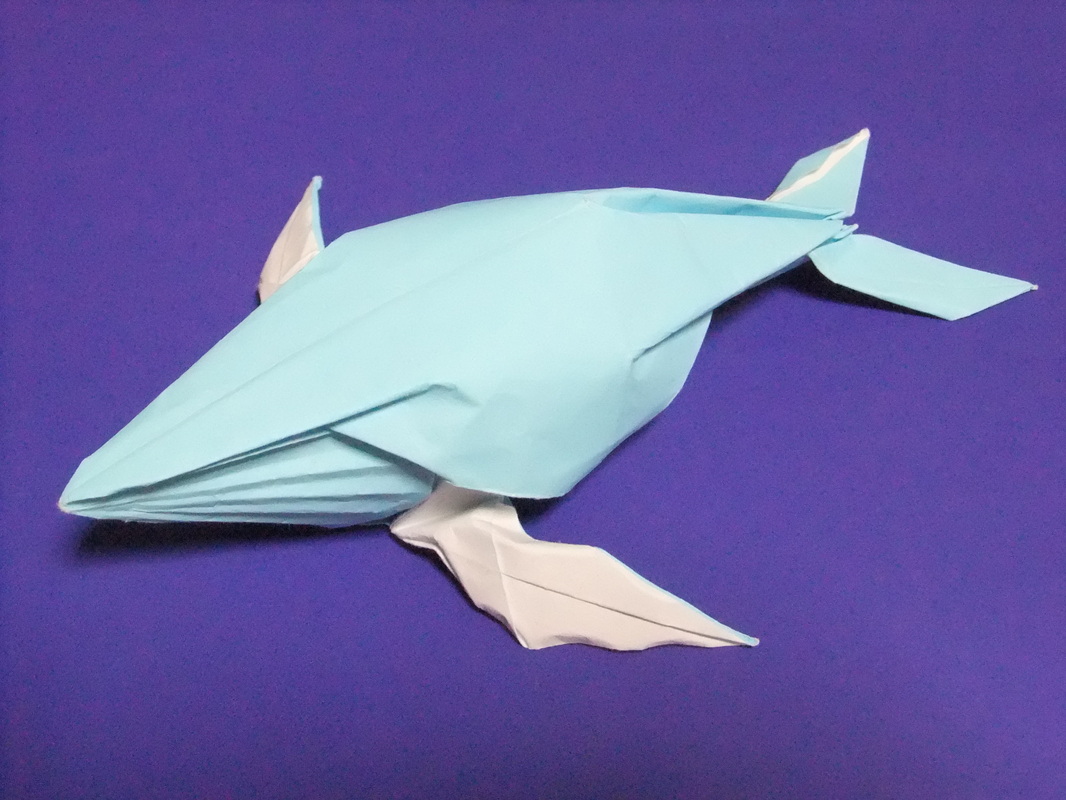|
These days I hardly fold any origami, but when I do, it's usually from either of the books Origami Art or Advanced Origami, both by Michael G. Lafosse & Richard L. Alexander from their Origamido Studio. Their designs have this elegance and beauty that attract me, and leaves me satisfied when I am able to reproduce part of that beauty with my own hands. So when I offered to fold a present for a friend, I asked him to choose from those books. He picked their Humpback Whale. Elephanthide paper, wet-folded Folding this reminded me of my fascination with whales - one of my dreams is to watch a whale leap out of the ocean and crash back in, at (relatively) close range. That would be like an encounter with a god of the seas. Perhaps my obsession with the form of the whale was what forced another attempt after the first version I folded from kami: This 25cm x 25cm kami came from Daiso at $2 a pack, and I don't think I'll use it much more. The paper isn't exactly square, and heavily creased areas are prone to tear and shed color. Dissatisfied with the result, I found some leftover elephanthide at home in roughly the right color, and made what I hope is a better version. However, the color change was lost, and some details (like the pleats in the lower jaw and general body shape) had to be sculpted by wet-folding. At the OUSA 2011 Convention I learned to fold Daniel Robinson's Humpback Whale, and i loved it so much that I folded it many times during the flight back home. I guess I love whales too much. Folding IssuesStep 15 of the diagrams shaped the upper jaw of the whale using a curved depression, quite standard. Daniel Robinson's whale used that too, but its lower jaw closes from the outside of the upper jaw, whereas the lower jaw of Lafosse & Alexander's whale sprouts from within the upper jaw. This causes the latter whale's lower jaw to appear trapped behind the curved depression. I didn't like that, and strangely the sample whale photo attached to Lafosse & Alexander's whale diagrams used a sort of swivel fold instead of the curved depression. Eventually I copied their method in my grey rendition. Presentation IssuesThe photos in the slideshow show a grey whale against a white background - what background color should I have used to hint at an aquatic environment? I tried a few blues, but they didn't mesh well with the grey subject.
3 Comments
MR
8/1/2016 06:24:22 pm
Beautiful. I just came back from a trip to Newfoundland. I didn't get the chance to witness these beautiful creatures and hold the same fascination and desire to see whales as you. I happened upon your blog looking for a way to fold a whale with the maps I used during my trip to honour and connect with them in a way that I have not yet been able to.
Reply
Leave a Reply. |
Archives
December 2020
Categories
All
|

 RSS Feed
RSS Feed